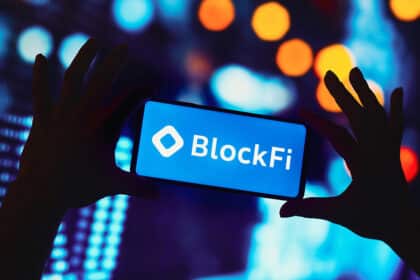A judge has approved repayment for BlockFi custodial wallet holders but said interest-bearing funds still belong to the bankrupt company.
BlockFi custodial wallet users could receive a massive $300 million repayment from the bankrupt digital asset lender. On Thursday, a New Jersey judge ruled that the assets locked in BlockFi’s custodial accounts belong to clients rather than the company’s estate. However, the judge further ruled that another $375 million that users sought to transfer from interest-bearing accounts following November’s withdrawal suspension still belong to BlockFi.
As Judge Michael Kaplan put it:
“The court finds that all digital assets held by the debtors in custodial omnibus wallets are indeed client property and not the property of the bankruptcy estates, subject, of course, to possible avoidance and clawback rights.”
Meanwhile, Judge Kaplan’s less-than-welcome address to BlockFi interest-bearing (BIA) holders read:
“No transfer requests by customers between the BIA and the custodial wallet accounts initiated after 8.15 pm on November 10th, 2022, were effectuated and completed. BIA account holders deposited their assets into these accounts with the full knowledge that they were undertaking certain risks in exchange for the chance of greater returns.”
Details of BlockFi Bankruptcy Case
Kaplan stressed his BIA ruling despite BlockFi’s user front-end seemingly confirming the successful transfer of funds back to customers. The bankruptcy judge spared custodial wallet holders from the same fate as BIA customers because [custodials] “did not share this risk or return.” As a result, custodial ownership of non-estate property should not be diluted by “those who took on such risks”.
Bankruptcy laws support the immediate return of funds belonging to customers rather than having said funds divided up among the company’s estate’s creditors. In BlockFi’s case, custodial repayment was delayed by a dispute over funds held in the company’s interest-bearing accounts. Customers had attempted to liquidate these funds after November 10th following the suspension of withdrawals and transfers. BlockFi’s BIA holders also tried another transfer on November 18th when the crypto lender instituted corresponding changes in the app.
In early November, BlockFi froze the funds in its interest-bearing accounts as ripples from the collapse of FTX permeated the crypto ecosystem. The New Jersey-based digital asset lender ultimately filed for Chapter 11 bankruptcy on November 28th – a few weeks after the FTX crash.
BIA Customer Attorney Argues for Same Favorable Repayment Treatment of Clients as Custodial Wallet Holders
Meanwhile, before BlockFi’s present bankruptcy court BIA ruling, an attorney representing the affected customers had disapproved of perceived repayment optics.
At a Monday hearing, Deborah Kovsky-Apap of Troutman Pepper argued for including her BIA clients in any repayment schemes. Kovsky-Apap pointed out that her clients all attempted to transfer BIA holdings during the interim period between November 10th and 18th. The attorney said disregarding the “plain language of the terms of service” that promises instant transactions would be unfair. In addition, Kovsky-Apap suggested that BlockFi was discriminatory in its treatment of customers who all faced the same situation.
BlockFi trial lawyer and representative Michael B. Slade said the company had yet to complete its assets’ sales in other developments. Slade’s revelation came amid reports that some clients received email confirmation validating said assets’ sales.
Tolu is a cryptocurrency and blockchain enthusiast based in Lagos. He likes to demystify crypto stories to the bare basics so that anyone anywhere can understand without too much background knowledge.
When he’s not neck-deep in crypto stories, Tolu enjoys music, loves to sing and is an avid movie lover.



